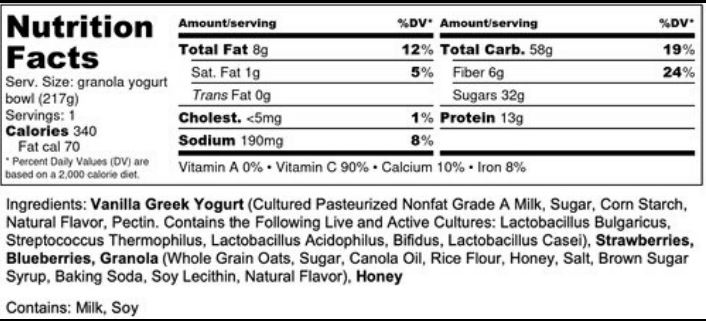Making informed choices about what you eat is key to maintaining a healthy weight and promoting overall health. By following these tips, you can make smarter food choices, better understand what you’re putting into your body, and ultimately achieve your weight loss and health goals.
Grocery Rules 101
- Never go on an empty stomach.
- Do your grocery shopping after you’ve had a meal.
- The further into the middle isles you venture, the more processed the food.
- Buy the bulk of your food from the fresh produce and 1st isle health food section.
- Be prepared. Always go with a list and tick things off as you find them. If you are unprepared you’ll end up buying the wrong foods.
- If the product says ‘food’ on the front, it’s probably highly processed and VERY bad for you. Wash your fruits and vegetables once you return home.
How to Read Nutrition Labels

Lets Breakdown The Facts
Calories – 1 Serving = 240 Calories
The total packet of chips has 8 servings
Chips total calories = 1,920
Sugars – 1 Serving = 10g of sugar
The total packet of chips has 8 servings
Chips = 80g of sugar
Carbs – 1 Serving = 40g of Carbs
The total packet of chips has 8 servings.
Chips = 320g of carbs
Fats – 1 Serving = 6g of fat
The total packet of chips has 8 servings.
Chips = 48g of Fat
3 Rules to Reading Ingredients

Highly Processed Oils – You will typically find food manufacturers will include
the lowest grade, highly processed oils. Avoid canola oil, vegetable oil and sunflower oil at all
costs.
Syrups and or sweeteners.
In particular, high-fructose corn syrup. This has been used heavily by the food industry
because of government subsidies and its ease of product. McDonald’s uses this across most of it’s range.
Words you cannot pronounce.
If you are the ingredients label and come across words that look like they came out of a science project chances are it’s not wholefood based and not for you.
Key Takeaways
- Eat real food, not too much, lots of vegetables and fruits.
- Portion control can be as simple as measuring with your hands
- Aim to add superfoods into all your meals as much as possible each day
- Be prepared when going grocery shopping
- Look out for the signs when reading nutritional labels and ingredients

